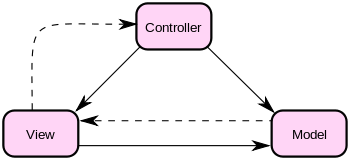Hi all,
Considering a hypothetical situation where an old, legacy presentation library has been maintained over the years, and has gradually had more and more business logic coded into it through a process of hasty corrections and lack of proper architectural oversight. Alternatively, consider a business class or namespace that is not separated from presentation by assembly boundaries, and was thus capable of referencing something like System.Windows.Forms without being forced to add a reference (a much more sobering action than a simple using clause).
In situations like this, it's not unimaginable that the business code used by this UI code will eventually be called upon for reuse. What is a good way to refactor the two layers apart to allow for this?
I'm loosely familiar with design patterns--at least in principle anyway. However, I don't have a whole ton of practical experience so I'm somewhat unsure of my intuitions. I've started along the path of using the Strategy pattern for this. The idea is to identify the places where the business logic calls up to UI components to ask the user a question and gather data, and then to encapsulate those into a set of interfaces. Each method on that interface will contain the UI-oriented code from the original workflow, and the UI class will then implement that interface.
The new code that wants to reuse the business logic in question will also implement this interface, but substitute either new windows or possibly pre-fab or parameterized answers to the questions originally answered by the UI components. This way, the biz logic can be treated as a real library, albeit with a somewhat awkward interface parameter passed to some of its methods.
Is this a decent approach? How better should I go about this? I will defer to your collective internet wisdom.
Thanks!
